The voltage of a power source will significantly influence the effective operation of a baseboard heater. So, if you are contemplating installing a 220 baseboard heater, you may wonder whether it will run on a 110-volt circuit. We asked electrical experts, and this is what we learned.
Generally, a 220-baseboard heater will not run on 110. But if it runs, the heater will generate insufficient heat to warm your room. The current that the 110-volt circuit carries is insufficient to enable the baseboard heater to run or generate enough heat.
It is helpful to know how baseboard heaters work to be better equipped to navigate the cold season. We invite you to read on as we tackle queries related to baseboard heaters. We guarantee that there is a lot to learn.
What Circuit Voltage Will A 220 Baseboard Heater Run On?
Baseboard electrical heaters rely on Joule heating to convert electrical energy to heat energy. Here, Joule heating implies that the heat energy generated per second by a resistance element in a circuit is equivalent to the electrical power absorbed by that element.
The heater needs to draw sufficient power into its heating element to generate heat - this heating element functions as a resistance element.
If you have a 220-baseboard heater, it is best to run it on a 220-voltage circuit. But if you plug the baseboard heater into a 110 circuit, there won't be enough power to operate it.
The voltage reading measures the pressure that pushes current from the circuit's power source via a conducting loop to enable the current to work.
You get the power in the circuit by multiplying the voltage by the current. But because the current level in your home is fixed, you can only increase the voltage to generate enough power to run a 220-baseboard heater.
While the 110 circuit has one hot terminal, the 220 circuit has two hot terminals. For this reason, a 220-circuit will generate enough power to operate the 220-baseboard heater.
However, you can use a voltage converter to transform the 110-v circuit into a 220-v circuit. This way, it will be possible to run the 220-baseboard heater on a 110 comfortably.
See this voltage power converter on Amazon.
What Is The Most Efficient Way To Use Baseboard Heaters?
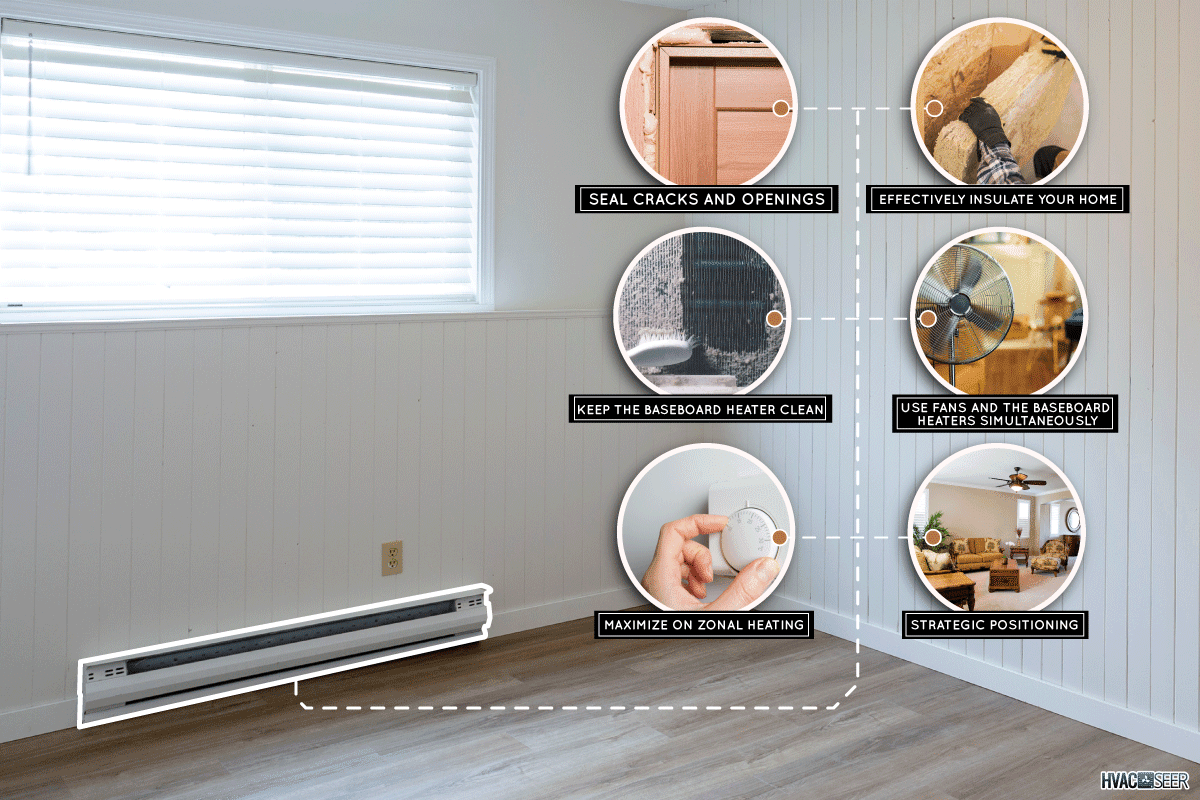
You can use a baseboard heater to complement your HVAC system's heating capacity in areas where it is inadequate. Therefore, installing a baseboard heater in extensions, big rooms, or rooms with very cold floors is ideal.
These heaters come in handy in creating heating zones in the home without investing in expensive technology. That way, even if the people in your household cannot agree on what temperature level is comfortable during winter, the individual needs are met through segregated heating.
But it is often more expensive to run baseboard heaters than alternative heating solutions such as electric heat pumps. Consequently, you may want to explore the most efficient way to use these heaters to minimize heating expenditure.
Here are some pointers:
Seal Cracks And Openings
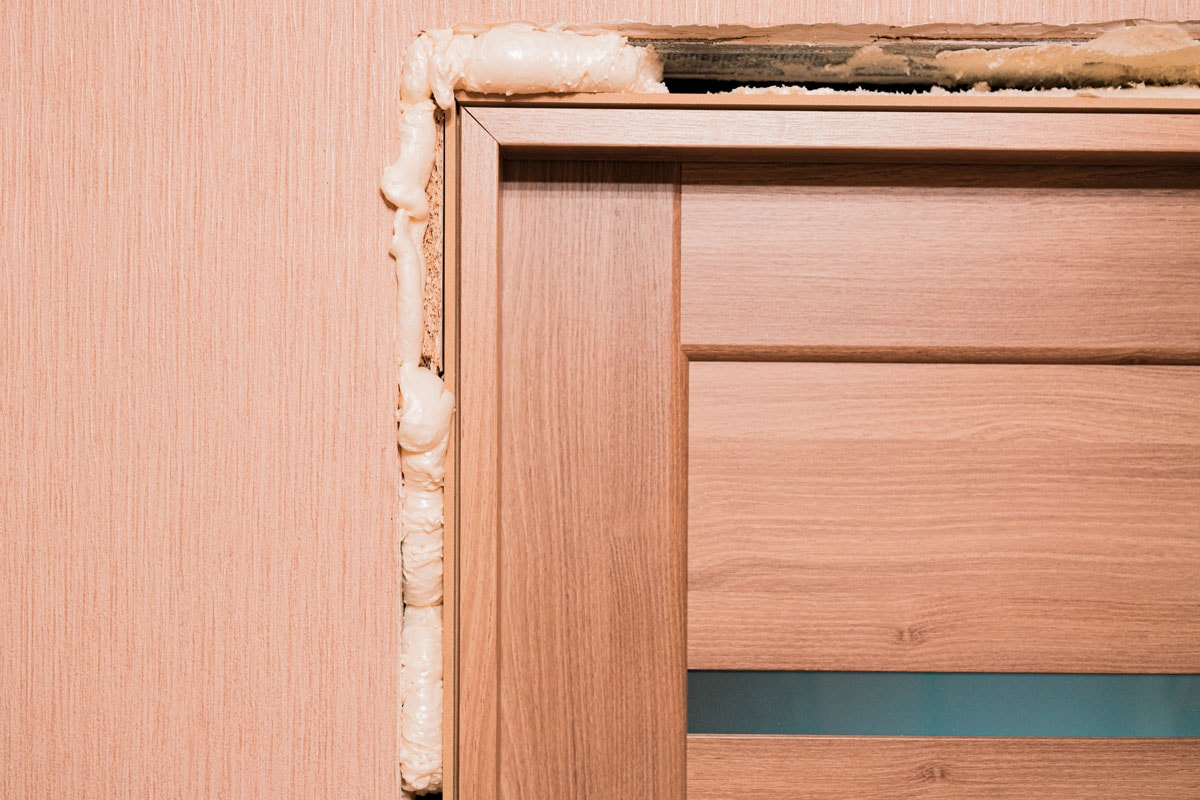
It is standard practice to mount baseboard heaters below windows, along the perimeter walls where most heat loss occurs.
We know that heat flows from warmer areas to cooler ones until both areas achieve an even temperature. We also know that density difference makes warm air move upward while cold air moves downward. Therefore, as the cold air enters through the window, it sinks.
The baseboard heater's strategic position is 3/4 of an inch above the floor, allowing it to draw in cold air from below and through the radiator fins. The heating element then warms this air and releases it into your home.
If the cold air keeps coming in, the heater may need to work harder to keep your home comfortable. By sealing gaps and cracks, you reduce the spaces through which cold air enters. Since the heater will not need to overcompensate to keep your home warm, you save on heating costs.
Please read this article to discover: How To Seal Gap Between Window And Brick Wall.
Effectively Insulate Your Home

Proper insulation reduces drafts and helps keep utility bills low. It reduces heat loss by providing an effective resistance to heat flow.
With proper insulation, heated air stays where you need it rather than escaping to other unheated areas. For this reason, the baseboard heater does not overcompensate to keep your house warm.
Please read this article to learn: How To Insulate Windows From The Outside [Step By Step Guide]
Please note that insulation wears down over time due to old age, critters in the wall, or harsh weather conditions. So, it is prudent to schedule an annual insulation inspection to assess whether it is still effective.
You can do the inspection yourself or contact a home insulation expert to conduct the exercise for you. It is best to leave the insulation to the experts as they are conversant with the local insulation guidelines and can do a thorough job.
Ultimately, when you act on the recommendations given after the inspection, the savings you accrue from a home insulation inspection well done surpass the costs and time involved.
Other than the direct savings on heating costs, when the baseboard heater does not overwork, it will break down less frequently. Therefore, you incur minimal repair charges. Also, the baseboard will last longer since it doesn't strain to meet your heating needs.
If you have old drafty windows that are a concern in your home insulation, please read this article to find out how you can resolve the problem: How To Insulate Old Windows Without Replacing Them.
Keep The Baseboard Heater Clean

The air that circulates your home carries dirt and debris. These contaminants settle on the baseboard heater's fins. Over time, the dirt accumulates and reduces your heater's efficiency.
When the fins do not heat enough air per heating cycle, your heater may need to overwork to reach the target temperature. Furthermore, dirt poses a fire risk when the heat generated doesn't radiate away. This heat can cause your baseboard heater to overheat, thus damaging it.
It is prudent to clean your baseboard heater regularly. Consider cleaning it at least two times a year - before and after the heating season. You may want to increase the cleaning frequency if you have fur pets in your home.
How To Clean An Electric Baseboard Heater
For this exercise, you will need a vacuum with a brush nozzle, a microfiber cloth, and needle-nose pliers. You can also wear gloves to protect your hands as you work around the metallic fins - they are sharp and can cut you.
See this pair of needle-nose pliers on Amazon.
Once you gather the tools, proceed as follows:
- Set the heater's thermostat to a very low temperature. Alternatively, you can disconnect the heater's circuit breaker. Let the fins cool before you proceed to avoid burning yourself - the fins can get quite hot.
- Lift the heater's front cover and pull it towards you to remove it. Generally, the cover comes off easily, so do not exert much pressure on it.
- Use the vacuum with a brush nozzle to dust the fins. Vacuum thoroughly but gently to ensure you eliminate all the dirt gathered between the fins without damaging them.
- Inspect for bent or damaged fins. Use the needle-nose pliers to straighten any bent fins - the heater works best when the fins are in tip-top condition. If you notice significant rusting on the fins, it would be wise to contact an HVAC professional to determine whether the heater is safe to use.
- Use the microfiber cloth to dust the front cover, then reinstall it. Align the cover and the metal tabs, tilt at the bottom, and click in the cover. You can tug the cover to confirm that it holds firmly in place.
- Dust the area around the baseboard heater to keep the dust from being drawn into the heater.
- Adjust the thermostat settings or switch on the circuit breaker to get the baseboard heater running.
You can also follow this visual guide:
Use Fans And The Baseboard Heaters Simultaneously
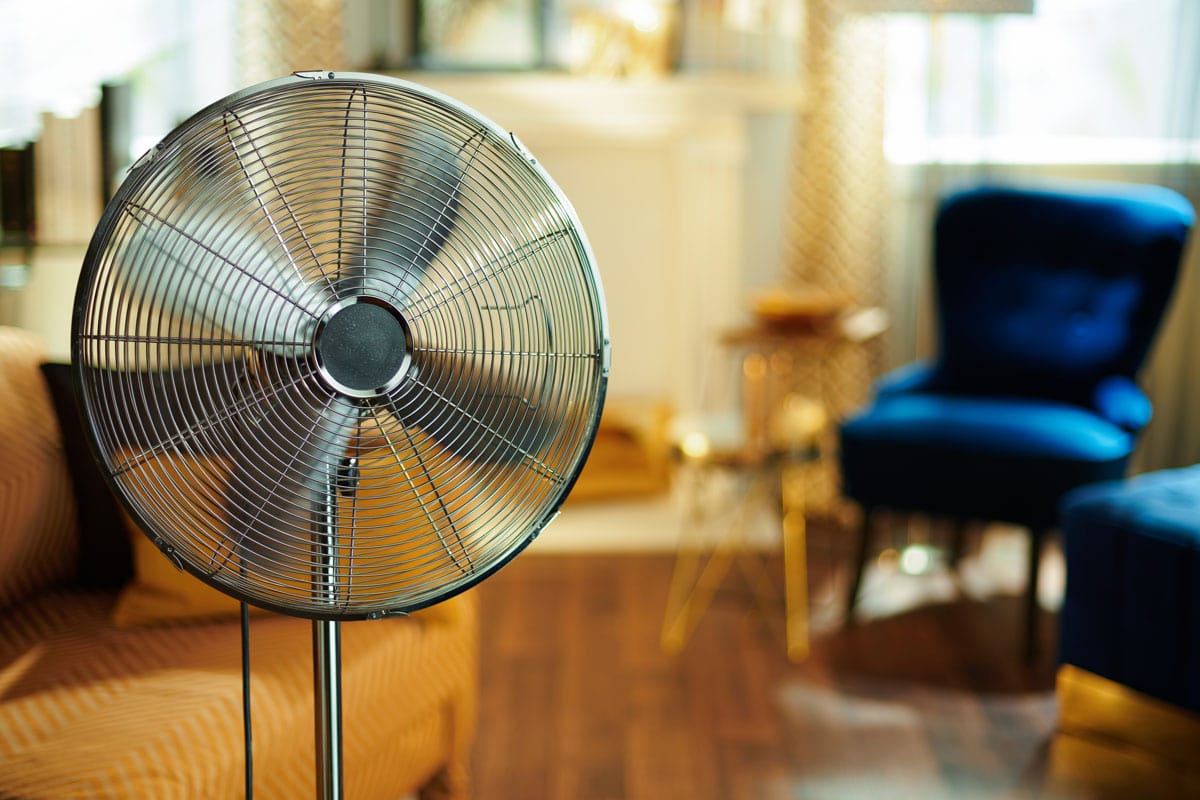
You can use fans all year round to circulate air evenly in your home. Most modern fans have a directional switch that determines the direction the fan rotates.
You want the fan to rotate clockwise in the winter to draw warm air toward the ceiling, push accumulated heat toward the wall, and back down into the room. Please note that heat loss through the attic reduces as the heated air is pushed toward the wall.
The room reaches the target temperature quickly with a faster circulation of the heated air. Consequently, the baseboard heater runs for a shorter period, hence lowering heating bills.
Also, improved heat distribution helps you lower the thermostat settings, resulting in lower operational costs.
If you have a Harbor breeze fan and are wondering how to reverse it, please read this post: How To Reverse A Harbor Breeze Fan?
Maximize On Zonal Heating
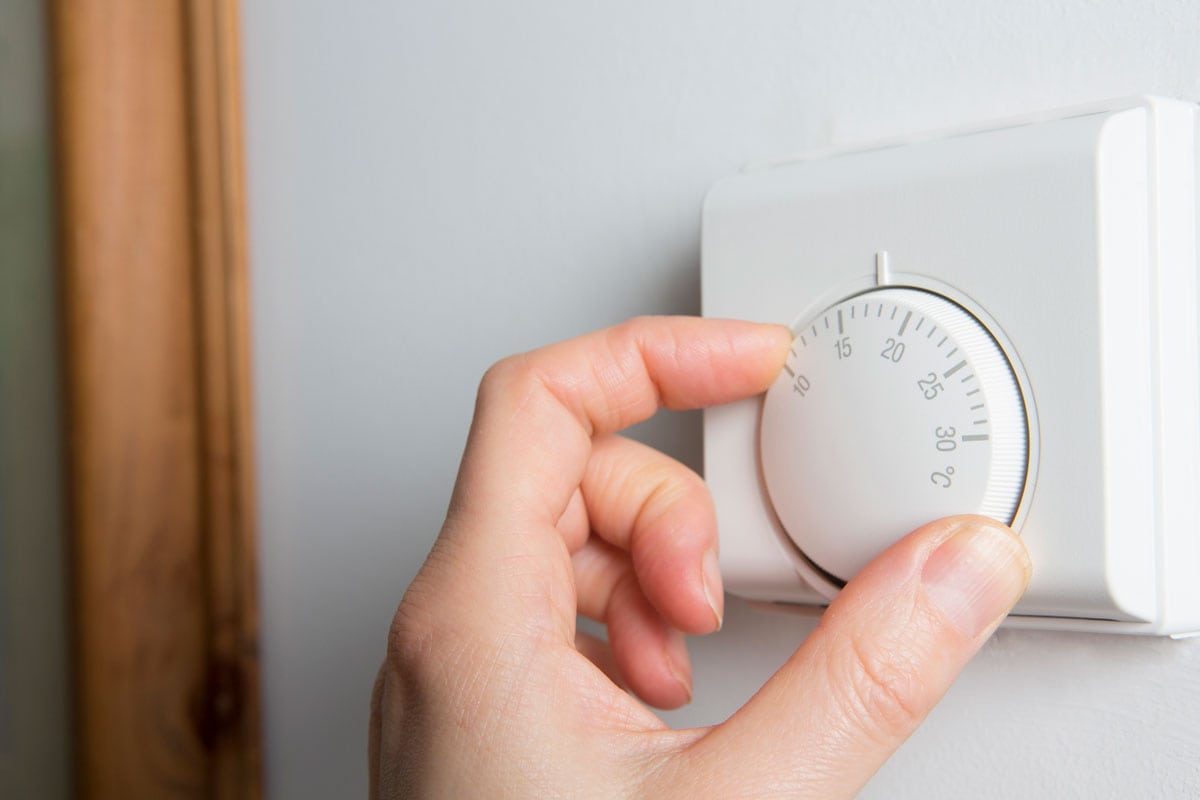
We've mentioned that baseboard heaters function as zonal heating since they only heat the rooms where you mount them. You can take advantage of this by lowering the thermostat settings of the heaters in unused rooms.
You can also lower the settings when engaging in activities such as cooking to reduce your utility expenditure. Cooking can heat your home. So, you may not need the baseboard heater to run when cooking.
Strategic Positioning
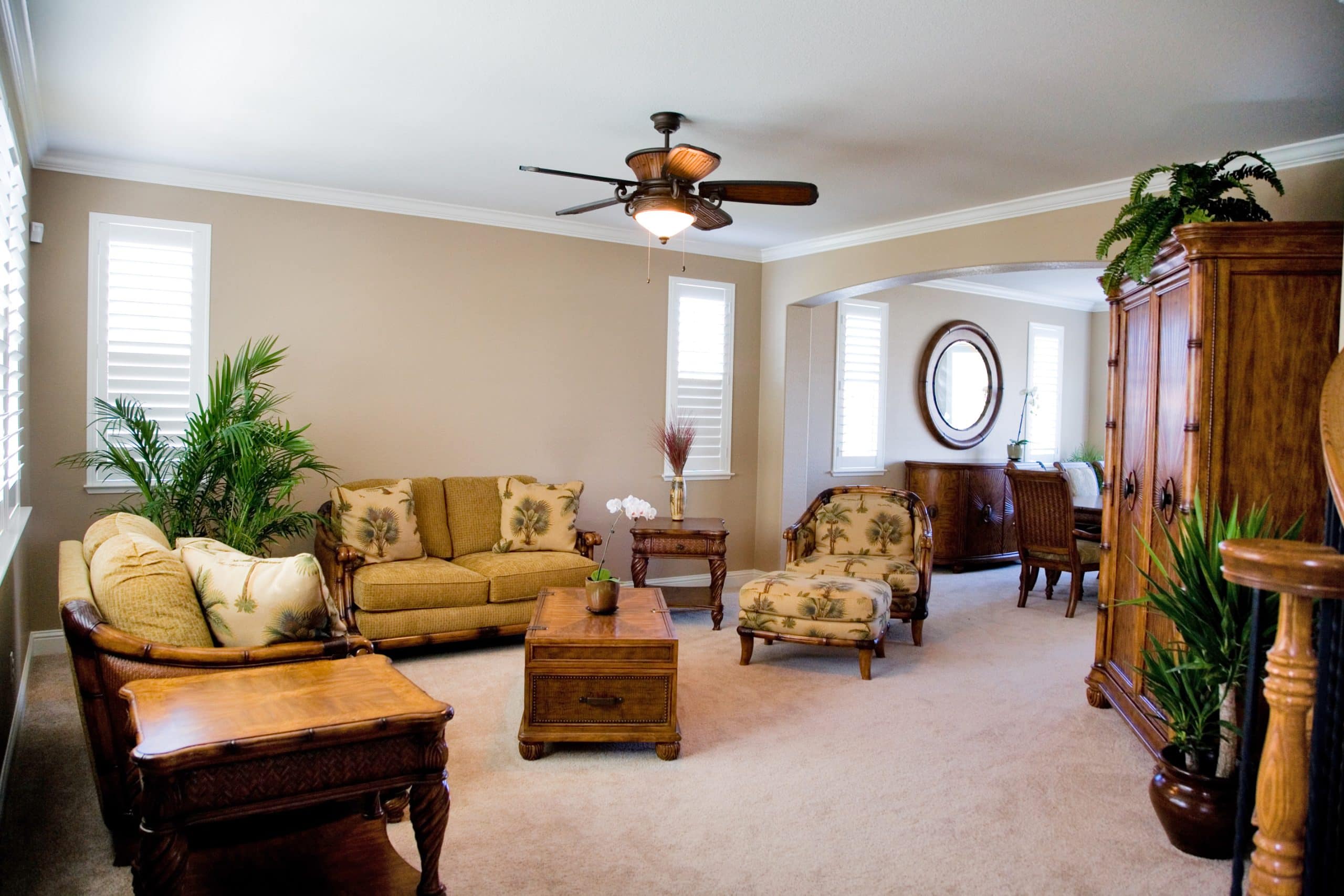
Keep the area around baseboard heaters clear of obstructions that can hinder air circulation. These barriers include furniture, blinds, or drapes.
To protect the baseboard heater from overheating, you want to ensure that air freely flows in and out of it. Furthermore, these obstructions are a fire threat since they can catch fire.
Final Thoughts
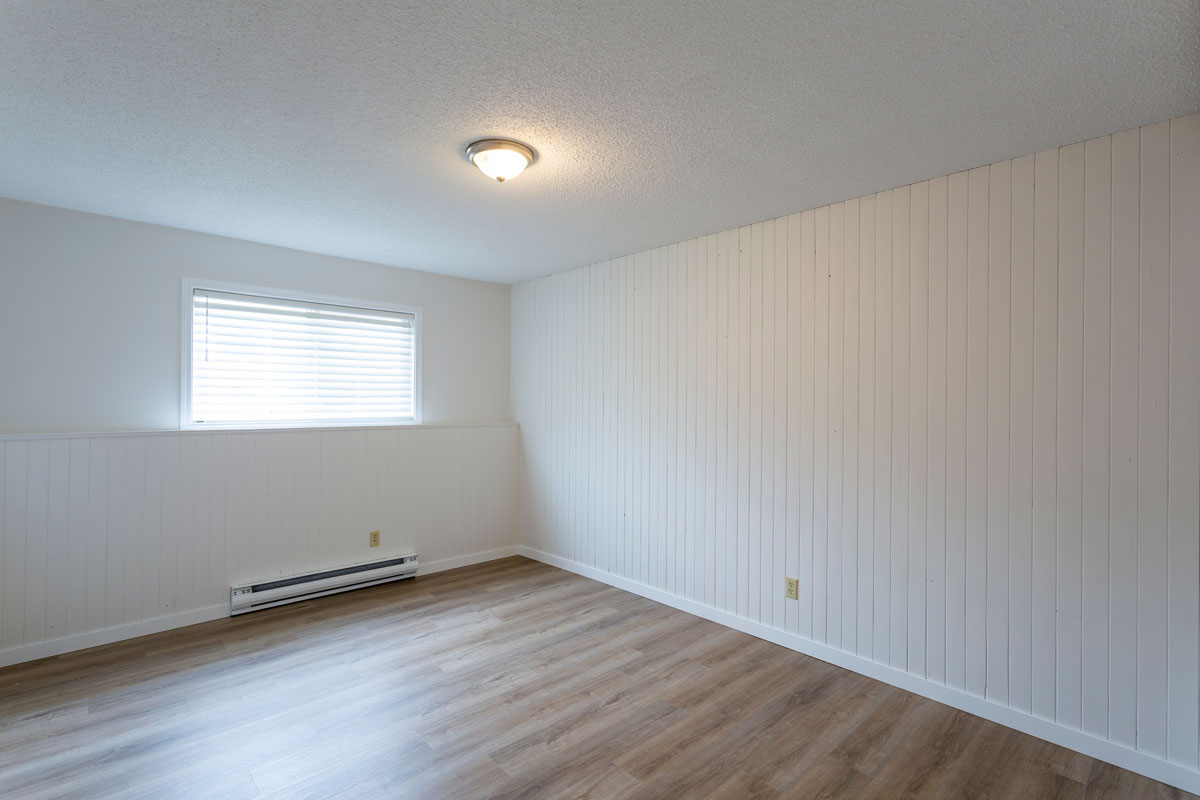
It is best to run a 220-baseboard heater on a 220-voltage circuit to ensure that it gets enough power to run it. However, you can use a voltage converter to transform a 110-voltage circuit into a 220.
Also, because baseboard heaters are expensive to run, put measures in place to enhance their efficiency. Therefore, seal cracks and gaps, insulate your home, keep the heater clean, position it strategically, and maximize zonal heating.


